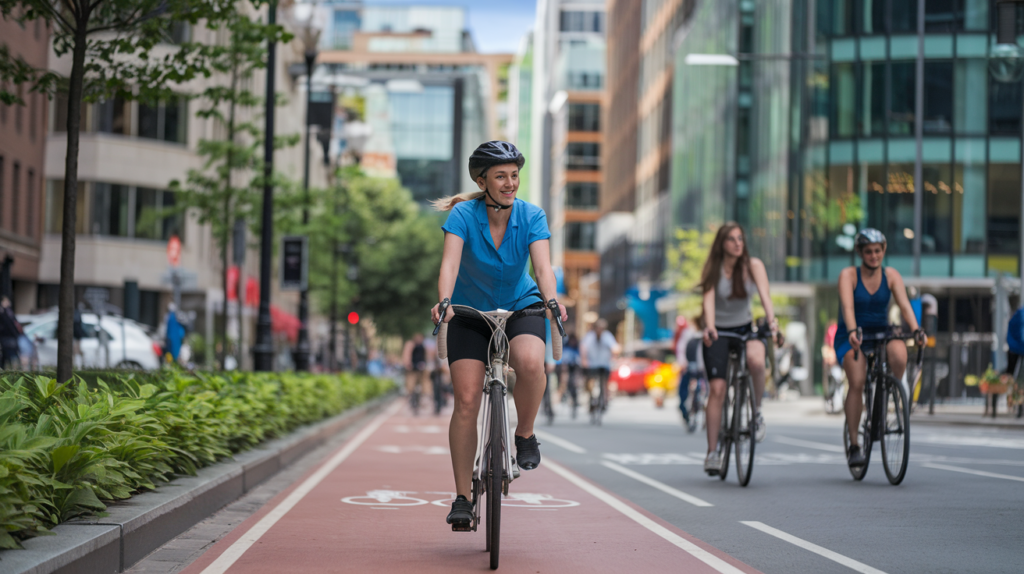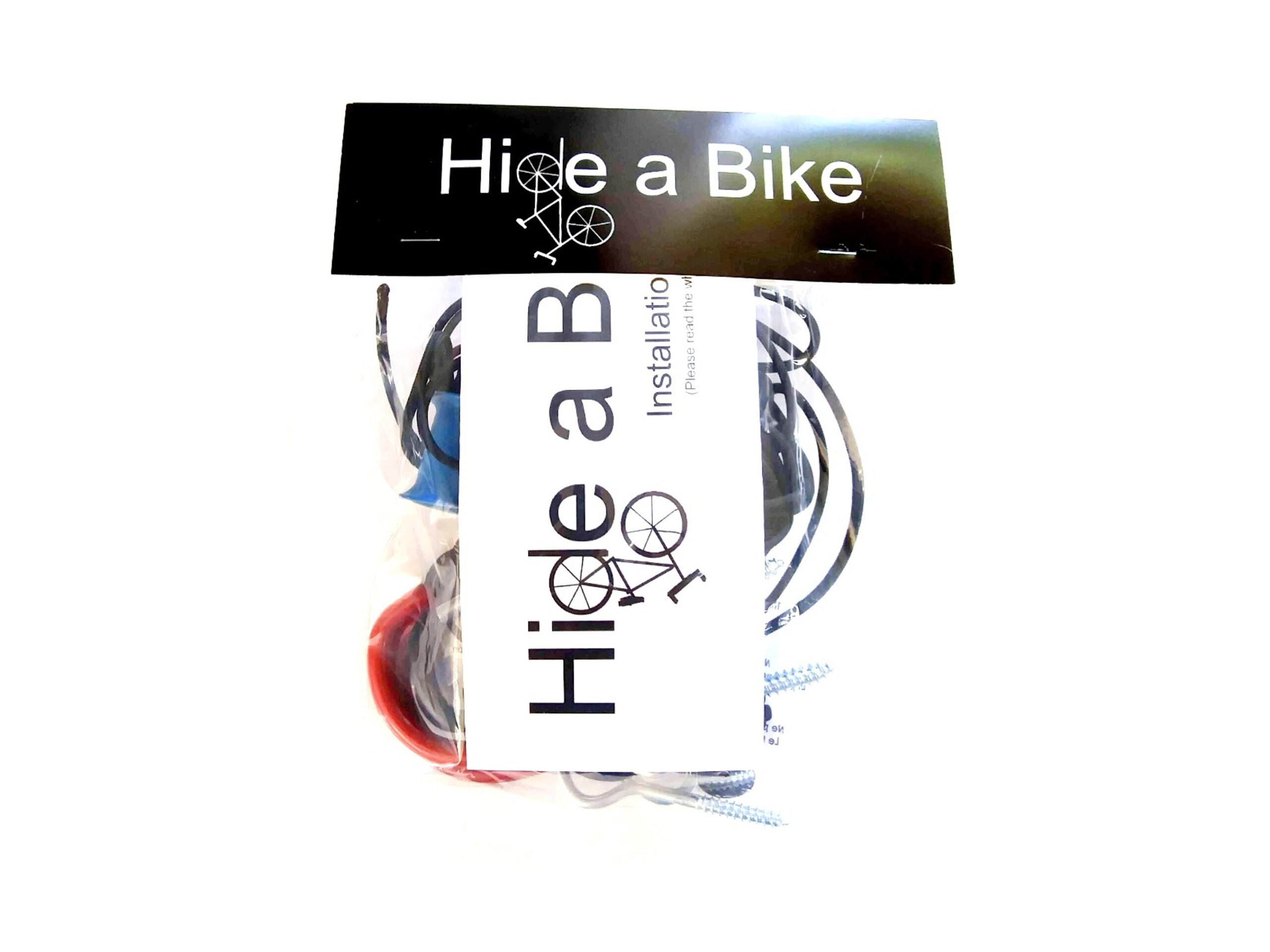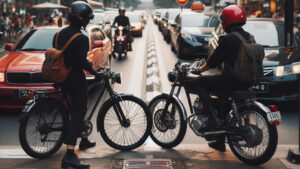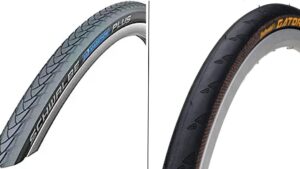How To Go Green And Enjoy The Ride With Urban Cycling

Discover the benefits of urban cycling, from reducing emissions to improving health. Join the green transportation revolution today!
*This article may contain affiliate ads that help to support this site*
In an era where climate change and environmental concerns have taken center stage, the need for sustainable commuting options is more pressing than ever. Every day, millions of urban dwellers contribute to carbon emissions by relying on traditional modes of transportation, such as cars and public transit. But there’s a greener, healthier, and more cost-effective way to navigate the bustling city streets: urban cycling.
Picture this: a world where the morning commute is not a stressful race against the clock but a refreshing journey that invigorates both body and mind. Urban cycling offers just that and more. It’s a silent revolution gaining momentum in cities worldwide. As we pedal our way through this article, we’ll explore the myriad of benefits when choosing two wheels over four, the profound impact it has on our environment, and the practical steps you can take to join the ranks of eco-conscious commuters.
So, saddle up and prepare to embark on a journey towards a more sustainable, healthier, and planet-friendly way of navigating the urban jungle. Welcome to the world of eco-friendly commuting through urban cycling.
Benefits Of Urban Cycling
Urban cycling isn’t just about getting from point A to point B; it’s a lifestyle choice that offers a plethora of benefits for individuals and their communities. Let’s delve into some of the compelling reasons to embrace this eco-friendly mode of commuting.
1) Health and Fitness: Perhaps the most obvious advantage of urban cycling is the positive impact on your health. Regular cycling helps you stay fit, improves cardiovascular health, and strengthens muscles. It’s an excellent way to integrate exercise into your daily routine without needing to hit the gym.
2) Cost-Efficiency: Cycling is incredibly cost-effective compared to owning and maintaining a car or relying on public transportation. Once you have a bike, your main expenses are minimal: occasional maintenance, safety gear, and perhaps a lock.
3) Reduced Stress: The serene rhythm of pedaling through city streets can significantly reduce stress levels. Unlike the frustrations of traffic jams, urban cycling offers a sense of freedom and control over your commute.
4) Environmental Impact: By choosing a bicycle over a car, you contribute to a cleaner environment. Cycling produces zero emissions, reducing air pollution and greenhouse gas emissions. It’s a small yet impactful step towards combating climate change.
5) Time Efficiency: In many urban areas, cycling can be just as fast as or even quicker than driving during rush hours, thanks to bike lanes and shortcuts inaccessible to cars.
6) Connectivity: Bicycles provide a more intimate connection with your surroundings. You can easily stop to explore local shops, parks, or scenic spots, fostering a deeper connection with your community.
7) Reduced Congestion: As more people choose to cycle, road congestion decreases, benefiting everyone. Fewer cars on the road mean less traffic, less noise, and safer streets.
8) Personal Satisfaction: There’s a sense of accomplishment that comes with choosing an eco-friendly mode of transportation. You’ll feel good about reducing your carbon footprint and contributing to a cleaner, healthier urban environment.
Urban cycling offers a holistic package of benefits—improving your health, saving you money, reducing stress, and making a positive impact on the environment. It’s a win-win for individuals and the community alike.
Environmental Impact
In the battle against climate change and urban pollution, urban cycling emerges as a potent weapon. This section will shed light on the profound environmental benefits of choosing a bicycle as your primary mode of urban commuting.
1) Reduced Emissions: One of the most critical aspects of urban cycling is its minimal carbon footprint. Unlike motorized vehicles, bicycles produce zero tailpipe emissions. This translates to a significant reduction in harmful pollutants like carbon dioxide (CO2), nitrogen oxides (NOx), and particulate matter, all of which contribute to air pollution and global warming.
2) Lower Energy Consumption: Cycling is incredibly energy-efficient. It takes only a fraction of the energy required to move a car, making it a sustainable and eco-friendly option. When you pedal, you’re essentially using your body as the engine, relying on the power of your muscles to propel you forward.
3) Preservation of Green Spaces: Embracing urban cycling can lead to a decrease in the demand for expansive road networks and parking lots. As cities prioritize cycling infrastructure, more green spaces can be preserved, enhancing urban aesthetics and fostering biodiversity.
4) Noise Reduction: The constant hum of engines and traffic noise contributes to urban stress and disrupts the natural acoustic environment. By opting for a quieter mode of transportation like cycling, you help reduce noise pollution in your city.
5) Mitigation of Urban Heat Islands: Cities often experience “urban heat islands,” where temperatures are higher than in surrounding rural areas due to human activities and infrastructure. Increased cycling reduces the heat generated by vehicles, contributing to a more balanced urban climate.
6) Reduced Congestion: As more people choose bicycles over cars, road congestion diminishes. This not only improves traffic flow but also reduces the stop-and-go patterns that lead to higher fuel consumption and emissions.
7) Positive Feedback Loop: The more people adopt urban cycling, the more cities invest in cycling infrastructure and policies. This positive feedback loop promotes further cycling, making it an increasingly attractive and accessible option for urban commuters.
8) Contribution to Sustainability Goals: Urban cycling aligns with global sustainability goals, such as those outlined in the United Nations’ Sustainable Development Agenda. By reducing emissions and promoting eco-friendly transportation, cyclists actively participate in a sustainable future.
Urban cycling isn’t just about personal benefits; it’s about making a collective impact on the environment. Every time you choose to ride your bicycle instead of driving, you’re contributing to cleaner air, reduced pollution, and a more sustainable urban landscape.)
Practical Tips When Starting Urban Cycling
Embarking on your journey as an urban cyclist is an exciting and rewarding endeavor. Whether you’re a seasoned rider or haven’t pedaled in years, these practical tips will help you make a smooth transition to urban cycling:
1) Choose the Right Bicycle: Select a bicycle that suits your needs and the terrain of your city. Hybrid bikes are versatile and suitable for urban environments. Ensure the bike’s size and frame geometry match your body for a comfortable riding experience. Consider features like gears, brakes, and tire width based on your intended use.
2) Invest in Safety Gear: A good-quality helmet is non-negotiable for safety. Ensure it fits snugly and meets safety standards. Invest in reflective clothing and accessories to enhance your visibility, especially when riding at night. Install lights (front and rear) on your bike, and use them in low-light conditions.
3) Learn Basic Bike Maintenance: Know how to perform basic maintenance tasks like tire inflation, chain lubrication, and brake adjustments. Keep your bike in good working order to ensure a safe and efficient ride.
4) Plan Your Routes: Familiarize yourself with cycling routes in your city, including bike lanes, bike-sharing programs, and designated bike paths. Use cycling-specific navigation apps or maps to plan your journeys and discover bike-friendly shortcuts.
5) Understand Local Cycling Laws: Learn and abide by local traffic rules and regulations applicable to cyclists. This includes obeying traffic signals, yielding to pedestrians, and signaling turns.
6) Ride Defensively: Stay alert and anticipate the actions of other road users, especially in busy urban environments. Make eye contact with drivers and pedestrians when possible to ensure they see you.
7) Secure Your Bike: Invest in a reliable lock to deter theft. Consider a U-lock or chain lock for maximum security. When locking your bike, secure it to a sturdy object, such as a bike rack.
8) Build Confidence Gradually: If you’re new to cycling or haven’t ridden in a while, start with shorter, less traffic-heavy routes. Gradually increase the complexity of your rides as your confidence and skill level grow.
9) Dress Comfortably: Wear comfortable clothing suitable for the weather. Layers are a good choice for variable conditions. If you plan to bike regularly, consider investing in padded cycling shorts for added comfort on longer rides.
Remember that becoming a confident urban cyclist takes time and practice. Be patient with yourself, and enjoy the newfound freedom and health benefits that cycling can bring.

Hide A Bike Kit
Is your garage starting to become a mess? Save space by storing your bikes flat against the ceiling.
Overcoming Common Challenges
As you embark on your journey as an urban cyclist, you may encounter some challenges that could initially deter you. However, with the right mindset and strategies, you can overcome these obstacles and fully enjoy the benefits of cycling in the city.
1) Weather Concerns: Inclement weather can make cycling less appealing, especially during rain or snow. Invest in appropriate gear like waterproof clothing, fenders, and good-quality gloves. Plan alternative transportation options for extreme weather days.
2) Safety Concerns: Concerns about sharing the road with vehicles and navigating traffic can be intimidating. Take a cycling safety course to boost your confidence and knowledge of road rules. Always wear safety gear and use hand signals to communicate your intentions to drivers.
3) Physical Fitness: If you’re not accustomed to regular exercise, cycling may initially feel strenuous. Start with short, easy rides and gradually increase distance and intensity. Your fitness will improve over time.
4) Lack of Cycling Infrastructure: Challenge: Some cities may have limited cycling infrastructure, making it less convenient to ride. Advocate for improved cycling infrastructure in your community. In the meantime, explore quieter streets and neighborhood routes.
5) Storage and Parking: Finding secure and convenient bike storage and parking can be a hassle. Research bike-friendly businesses and buildings with bike racks or indoor storage options. Invest in a portable lock for added security.
6) Time Constraints: You may worry about the time it takes to cycle compared to faster transportation. Plan your routes efficiently, and remember that short urban trips can often be quicker by bike due to reduced traffic and parking hassles.
7) Maintenance Knowledge: Lack of bicycle maintenance knowledge can be a barrier. Attend a basic bike maintenance workshop or watch online tutorials. Start with simple tasks like tire changes and chain lubrication.
8) Confidence Building: Building confidence in city cycling takes time, especially for new riders. Ride regularly, and gradually challenge yourself with more complex routes. Join local cycling groups or clubs for support and camaraderie.
9) Route Planning: Finding safe and efficient routes may seem daunting. Use cycling apps and websites to discover popular cycling routes in your city. Join online cycling communities to get route recommendations from experienced riders.
Remember that overcoming these challenges is part of the journey, and with time, you’ll become a confident and skilled urban cyclist. The key is to start slowly, seek support when needed, and enjoy the countless rewards that come with eco-friendly urban commuting.

Hide-A-Bike Installation Guide
If you want to put together a Hide-A-Bike kit for yourself, just download these easy to follow, step-by-step directions, complete with a full hardware and parts list.
Conclusion
Urban cycling is more than just a mode of transportation; it’s a powerful statement of your commitment to a sustainable, healthy, and eco-friendly lifestyle. As you pedal through city streets, you’re not only improving your well-being but also contributing to cleaner air, reduced congestion, and a more vibrant urban environment. Your decision to embrace urban cycling aligns with the global movement towards sustainable transportation and a healthier planet.
As you embark on your cycling journey, remember that every pedal stroke takes you closer to a greener, more sustainable future. So, whether you’re cycling for your health, the environment, or simply the joy of the ride, know that your choice makes a meaningful difference. Embrace the freedom of two wheels and join the growing community of urban cyclists who are transforming cities one revolution at a time.
Share This Article With A Friend
Did You Read This Whole Article?

You deserve a gift! Enter your email to receive a FREE copy of the Hide-A-Bike Installation Guide! And once a month we will send you a newsletter with the best deals on the internet for bicycle gear and accessories.
About Hide A Bike

Save space by keeping your bike flat against the ceiling with the original easy and convenient bicycle storage solution.
Thank You For Visiting!

You deserve a gift! Enter your email to receive a FREE copy of the Hide-A-Bike Installation guide. And once a month we will send you a newsletter with links to our best finds on bicycle gear and accessories.
Share This Article:
Most Popular Articles:
Article Categories:
Related Articles:

How To Explore Your City By Bike: Tips, Routes, And Hidden Gems







